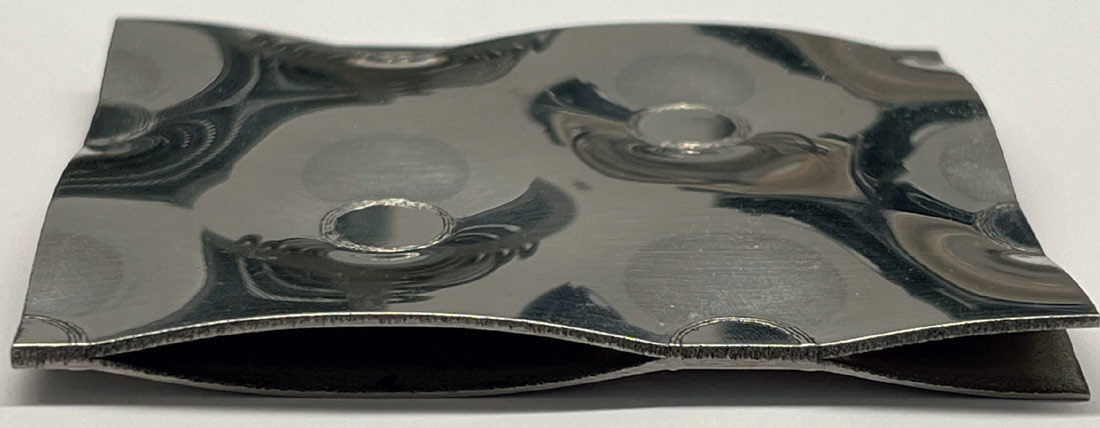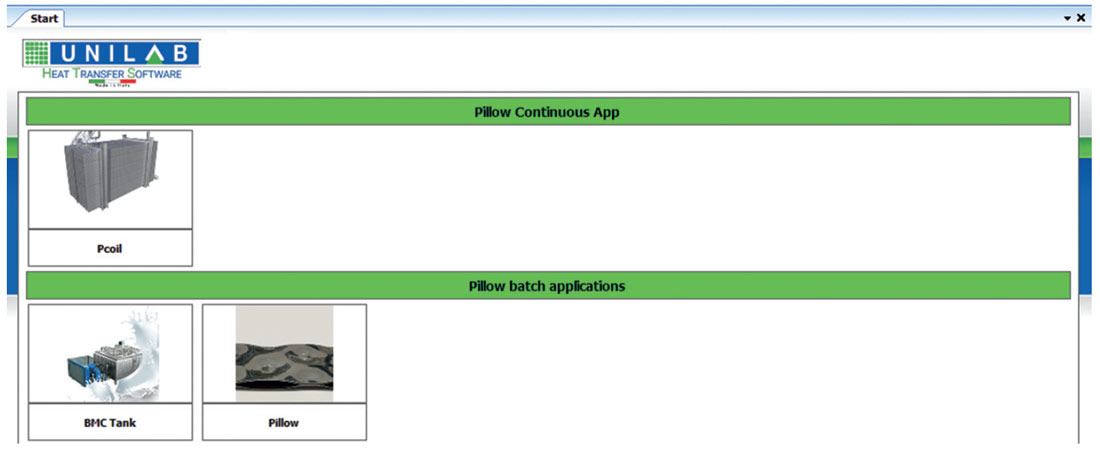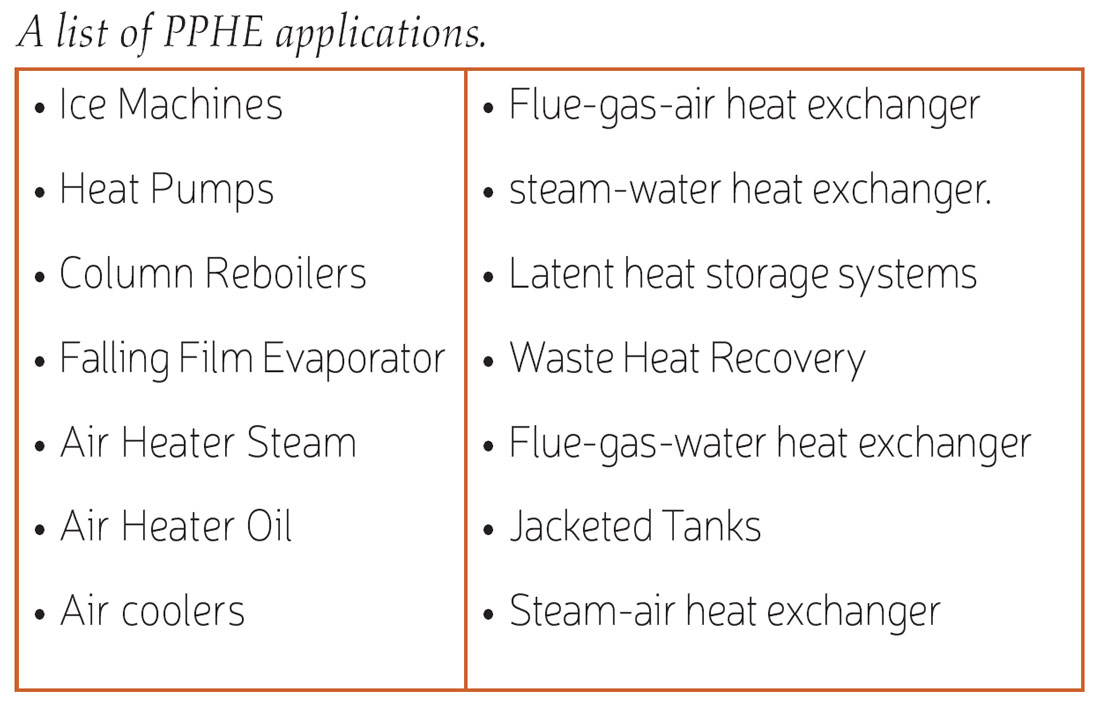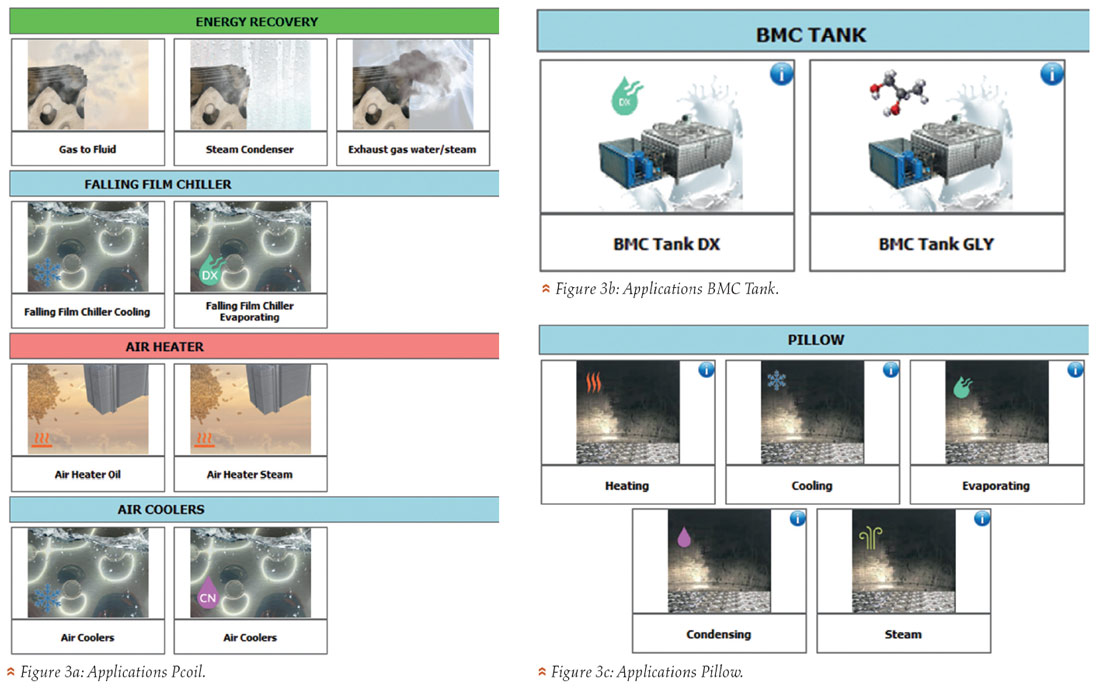
All text and images courtesy of Unilab
This article aims to introduce the pillow plate heat exchanger (PPHE) by indicating its main characteristics and manufacturing process. It also presents a list of several advantages of use, comparing it with other heat exchangers such as shell and tube. Lastly, an introduction to the Pillow Suite software developed by Unilab, which enables verification of an existing PPHE, new designs, and prediction of life cycle cost.
Innovative heat exchangers
In recent years, there has been a growing interest in pillow plate heat exchangers (PPHEs) because of their versatility to cover a large number of applications in most industries, as well as for their good thermo-hydraulic performance and low-cost production. PPHEs present an alternative design to many types of heat exchangers and are classifi ed as innovative. Their principal characteristic is a three-dimensional wavy surface plate, from which the term “pillow” is derived. Figure 1 shows the wavy aspect of a pillow plate. Another characteristic of the PPHE is that the pillow plates have a low specific weight which is an attribute that allows them to be connected into head sections of distillation columns, for example.
PPHEs have a pressure resistant construction that offers low pressure loss and a high heat transfer coeffi cient. Several pillow plates settled as a stack side by side, also known as pillow plate banks, compose this type of heat exchanger. They are equipped with an inlet distributor and an outlet collector for the fluid inside the channels. The plates are formed by two metal sheets settled on one another by spot-welding by laser resistance methods.

Manufacturing process
The pillow plate manufacturing process is reasonably simple compared to other heat exchangers. After they have been welded, the plates pass through a hydroforming process that inflates them with pressures normally from 60 to 80 bar which are much higher than the operating pressures. The channels formed by this process are separated hermetically and fixed without gaskets. Commonly, plates are made with the same thickness so, when the hydroforming process is applied, both plates deform equally. If the PPHE is composed of plates with different thicknesses, only the thinner deforms, resulting in a one-side expansion. Depending on the thickness of the plates, several models can be obtained.



Advantages
PPHEs combine the advantages of the most commonly used types of conventional heat exchangers, being pressure and temperature resistance like shell and tube heat exchangers (STHE), as well as the cost-effectiveness and compactness of plate heat exchangers (PHE).[1] The heat transfer surface area tends to be further reduced compared to other types of plate heat exchangers under the same application conditions, which translates into further advantages in terms of process sustainability.[1]
The list below presents some advantages of PPHEs. Some of them may encourage STHE manufacturers to invest in this new technology:
• High corrosion resistance, low-pressure drop, high-pressure and temperature resistance.
• Good cleanability: which leads also to low costs of maintenance. For other types of heat exchangers, such as STHE, a mechanical cleaning procedure is not available. The inner channels of the Pillow Plates can be cleaned exclusively chemically or with the use of a return flow.
• High welding reliability: Commonly, the welding point diameters are chosen to be as small as possible so as to provide the necessary mechanical stability for the plate hydroforming process, and long-term use of the plates. Reducing the welding point diameter improves heat transfer and decreases pressure loss. The presence of a welding spot in a pillow channel increases the thermal performance compared to other conventional heat exchangers, particularly at a high Reynolds number.[2]
• Excellent turbulence design: The wavy aspect of the plates is a key factor in the thermo-hydraulic performance of this type of heat exchanger, ensuring the turbulent movement of heat carriers inside them. The possibility to use different cross-sectional areas for the cold and hot sides allows the heat transfer surface area in PPHEs to be reduced compared to other types of heat exchangers under the same application conditions.[3]
• High heat exchange coefficient: The medium inside the pillow plates is being continuously redirected by the welding point pattern. This leads to thin boundary layers and good heat transfer performance, and hence, to lower required heat transfer area and lower investment. [4]
• No gaskets required: As no gaskets are required, it contributes to PPHE to achieve high temperatures and high pressures leaving aside the need for caution on choosing the gasket material to specific operating conditions. Besides the fact that it promotes a low production cost.
• Flexible design: Due to their flexible design, pillow plates may also be used as heating or cooling jackets for reactors, vessels, tubing of storage tanks, etc.[4]
• Their manufacturing process is much simpler than that of STHEs, involving much less physical space, costs with transportation and installation and material.
Important applications
There are important applications found in high-temperature flue gas energy recovery already built with PPHEs. In the new global economy, thermal heat recovery in industrial processes has become a key factor in reducing environmental impact, energy consumption and, consequently, costs.

Unilab software: Pillow Suite
Unilab has renewed its Pillow Suite, now divided into 2 main sections, as in Figure 2, which are Continuous (Steady State) and Batch Applications.
The Continuous App contains PCOIL, our software for pillow plate banks, divided by application types in several calculation modalities. Batch applications include BMC Tank, for the calculation of bulk milk cooler tanks using PPHEs, and Unilab Pillow, for the design of PPHE inside a circular or rectangular tank. Figure 3 shows all applications and calculation modes currently available.
The pillow plate banks section (Pcoil) allows energy recovery calculations, ranging from applications with gas external to the pillow bank, to steam that condenses, to vaporizers using exhaust gas to create steam. The falling film chiller module, fluid-fluid or DX, uses specific conduction equations enabling calculations of the film thickness as a function of flow rate, size and distribution on the plates, and as a function of this thickness, to calculate the heat transfer coefficient. Air heaters, used for example in seed heating, and air cooler applications, complete the Pcoil module.
The software enables verifi cation of an existing PPHE as well as to design it, fi xing some of the dimensional param-eters in order to obtain a certain capacity.
Furthermore, Pillow Suite allows the user to evaluate costs of the PPHE. For energy recovery applications, the user can also perform a life cycle cost analysis of the heat exchanger, evaluating the annual amount of energy recovered, the payback period and even the amount of CO2 recovered.
This analysis is performed with practicality, considering factors such as cost and weight of material, commercial factors, energy cost, hours of operation per day, and days of operation per year. This analysis, showed in Figure 5, is essential when choosing a PPHE for a certain heat recovery application and also to compare its costs with other types of heat exchanger such as shell and tube.
For references, please contact the Editor;
e.pritchard@kci-world.com
About the Company
Unilab is a heat transfer software house that, for over 35 years, has been providing its customers with cutting-edge software solutions. With over 450 customers in more than 67 Countries, Unilab is the go-to partner for heat exchanger and equipment design & selection.
About the Authors
Milena Vilar França, Engineering Dept., Unilab Srl.
Jacopo Fasolato, Sales Dept., Unilab Srl.
sales@unilab.eu

